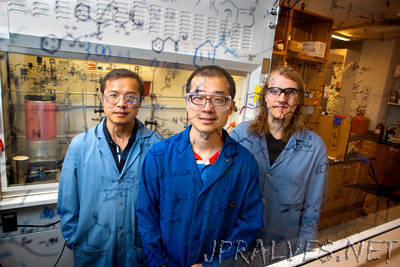
“Give your medicine a jolt. By using a technique that combines electricity and chemistry, future pharmaceuticals – including many of the top prescribed medications in the United States – soon may be easily scaled up to be manufactured in a more sustainable way. This new Cornell research appears in Science Aug. 11. Currently, making pharmaceuticals involves creating complex organic molecules that require several chemical steps and intense energy. The process also spawns copious amounts of environmentally harmful – and usually toxic – waste. At the heart of many popular pharmaceuticals are vicinal diamines, which contain carbon-nitrogen chemical bonds, a bioactive foundation for the medicine. According to Song Lin, assistant professor of chemistry, many widely consumed therapeutic agents have these diamines, including prescription-strength flu medicines, penicillin and some anti-cancer drugs. To synthesize diamines, chemists have to employ oxidation and reduction reactions that reconfigure molecules, atoms and ions. It’s an energy-intensive and chemically wasteful process. Despite technical advances, a broadly applicable approach to diamine synthesis remained elusive, Lin said. But the laborious tasks and chemical squander can go away. Lin and his team have developed a technique that creates vicinal diamines more easily and without the toxic waste. The process uses electricity and chemistry – electrochemistry – and then employs Earth-abundant manganese.”
